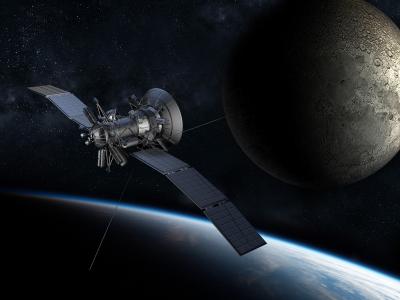
Russia's space agency Roscosmos sent a new satellite into orbit in a dazzling Christmas Eve launch today (Dec. 24). It's mission: to study Earth's weather from above.
A Proton rocket launched the new satellite, called Electro-L 3, into orbit from Baikonur Cosmodrome in Kazakhstan at 7:03 a.m. EST (1203 GMT), though it was 3:03 p.m. in the afternoon at the spaceport in Central Asia.
Related: The Greatest Spaceflight Moments of 2019
More: How Russia's Proton Rocket Works (Infographic)
This may worth something:
China's Taiji-1 satellite successfully passes in-orbit tests - Xinhua | English.news.cn
BEIJING, Dec. 25 (Xinhua) -- China's first satellite to conduct experiments on key technologies related to space-based gravitational wave detection, Taiji-1, has successfully completed its in-orbit tests, the Chinese Academy of Sciences (CAS) announced Wednesday.
The satellite, sent into orbit on Aug. 31, 2019, is China's first such kind of satellite, and has completed its in-orbit experiments, making a breakthrough in the country's gravitational wave detection, said Wu Yueliang, chief scientist of the project.
Lasers Using Neural Networks Accurately Spot Space Junk in Earth's Orbit

Scientists applied a set of algorithms to laser-ranging telescopes and succeeded in increasing accurate detection of the space litter in Earth’s orbit threatening spacecraft safety.
“The possibility of successfully navigating an asteroid field is approximately 3,720 to one!” exclaimed C-3PO as Han Solo directed the Millennium Falcon into an asteroid field in “Star Wars: The Empire Strikes Back.” Earth’s orbit is nowhere near as dangerous, but after more than half a century of space activity, collisions between jettisoned engines and disintegrated spacecraft have formed a planetary scrapheap that spacecraft need to evade.
6 unusual, vaporizing planets discovered using a new technique - Business Insider
Six unusual, vaporizing planets have shown scientists a new way to find alien worlds around other stars.
The new method of planet hunting involves seeking out stars surrounded by gas clouds. Such stars likely have planets in their orbits that circle too close and slowly vaporize from the heat — a process called ablation.
A group of astronomers at The Open University in England has pinpointed three such stars surrounded by gas clouds, and discovered exoplanets (the term for planets outside our solar system) circling all three. A trio of papers published Monday in the journal Nature Astronomy details the findings.
This may worth something:
FCC Allows SpaceX To Modify Starlink Orbit Plans, Hopes For Faster Deployment Of Satellite

Elon Musk's SpaceX can put satellites into orbit in more rings than it initially was approved for, the Federal Communications Commission ruled.
The FCC said SpaceX can put satellites in orbit in 72 rings around the planet at 550 kilometers up — three times as many orbits as it was initially granted in April. Each ring will have 22 SpaceX satellites instead of 66, as previously approved, a change that SpaceX says will allow it to populate each ring more quickly.
JAXA Set Guinness World Record For Lowest Orbiting Satellite

The Japan Aerospace Exploration Agency ( JAXA ) has set the Guinness World Record for the "lowest altitude by an Earth observation satellite in orbit".
SLATS maintained the 167.4-kilometer orbit for a period of seven days. During this time, it was able to capture high-resolution images despite the harsh conditions. In addition to the images captured by the satellite, it also acquired atmospheric and atomic oxygen density data, and readings on the effect of atmospheric conditions on material samples.
NASA Space Station On-Orbit Status 19 December 2019 - Craig-X is a Flight Test Platform - SpaceRef
Today - Microgravity Crystals: The crew performed the procedure review, pipetted and mixed solutions of varying viscosities onto the crystallization plates.
NREP-5 (Nanoracks External Platform mission-5) installation: In preparation for transfer and installation to the JEM Exposed Facility, the crew removed the Nanoracks External Platform (NREP) mission-4 hardware and installed the mission-5 sub payloads onto the NREP system. NREP-5 contains the Craig-X and Astrileux sub payloads and is planned to be passed through the JEM airlock, robotically installed onto the Exposed Facility and activated at the end of this week.
Listen to the Christmas Eve message from the first humans orbiting another world (1968) / Boing

How many times a day do you wipe your glasses clean? If you actually care about your specs, you’re using a microfiber cloth and not your shirt. In which case, good for you. But even so, you’re just removing the surface dust on those lenses – not the grime and oil that accumulates on a […]
When you’re doing long-term workouts, you know the recovery can be just as important as the exercise itself. And when the intensity gets to a certain level, a simple stretch won’t cut it. From there, you’ve got two options. Either head to the spa for a professional massage, or take matters into your own hands […]

No comments:
Post a Comment